potentially hazardous foods must be stored
Potentially hazardous foods should be kept at 5 C or colder or above 60 C wherever possible however ready-to-eat foods can safely remain between 5 C and 60 C for up to 4 hours. The 2 Hour 4 Hour Rule specifies how long fresh potentially.
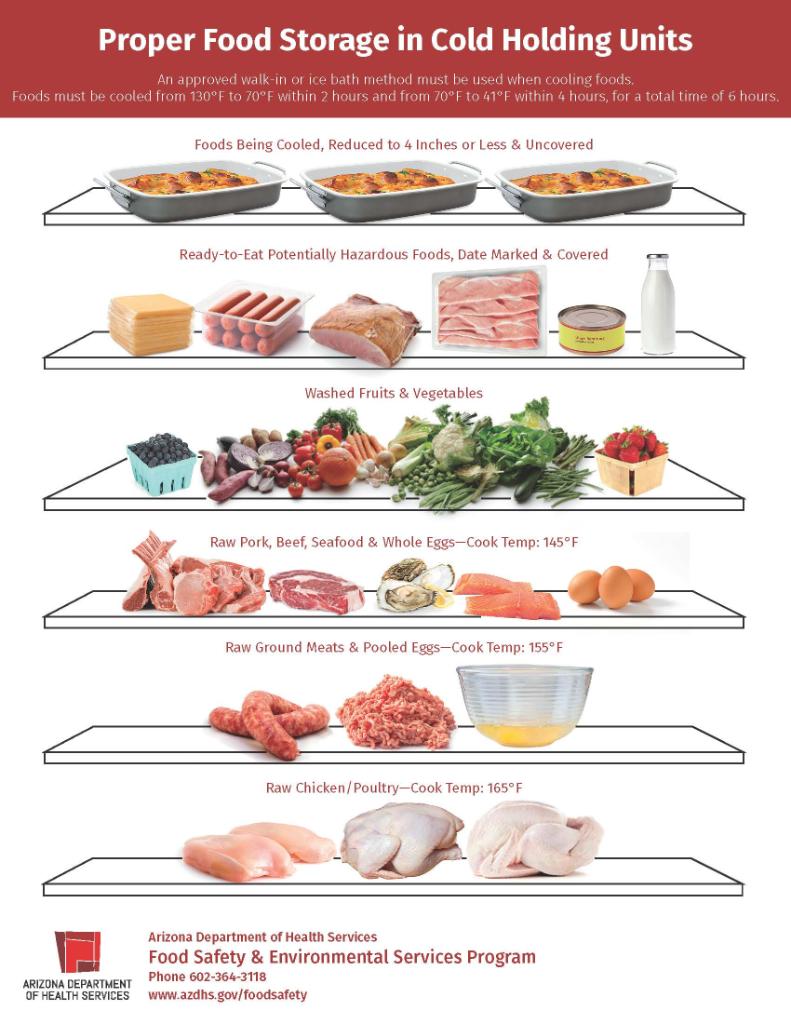
Twitter 上的 Az Dept Of Health Forget The Labels On The Refrigerator Bins For Food Safety Store Foods In Your Refrigerator According To Cook Temperature With Foods Requiring The Highest Cook Temperatures
Potentially hazardous foods must be held at 41 degrees Fahrenheit or less for cold-holding.
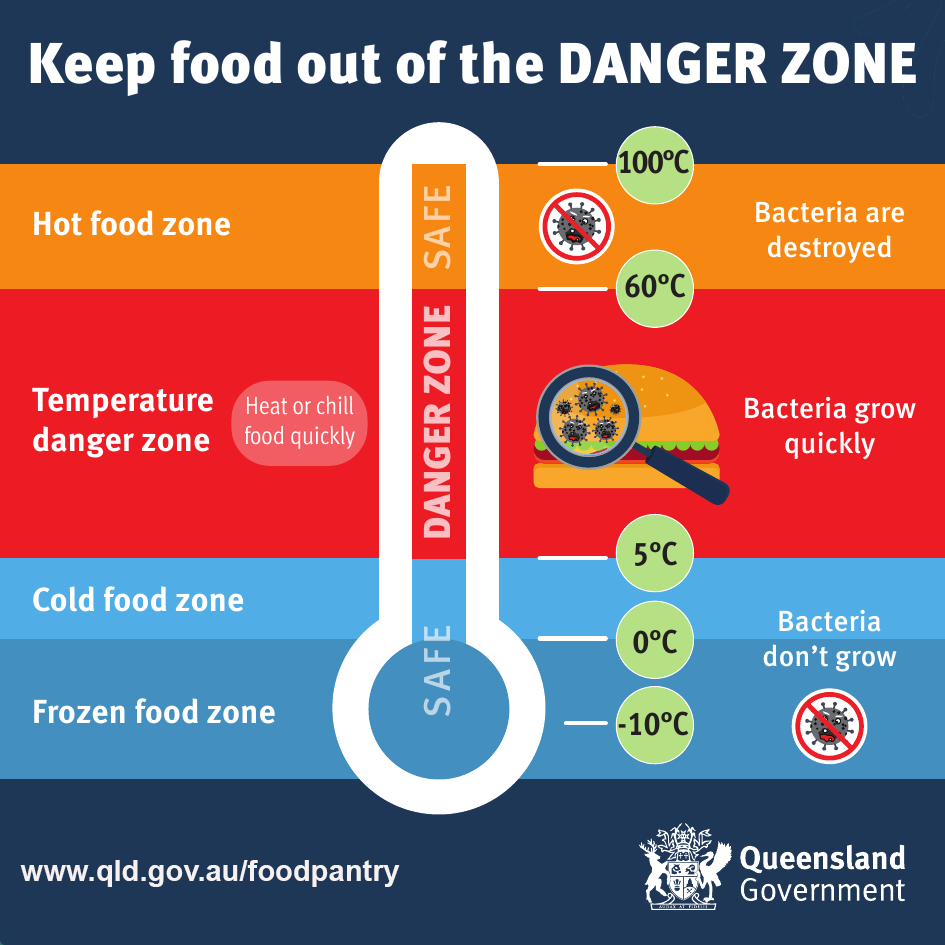
. All potentially hazardous food should be kept below 41 o F for cold foods or above 135 o F for hot foods except during necessary preparation time or a short display period. Store raw food like meat and seafood separately or below ready-to-eat foods to avoid contamination from meat juices etc. Equipment must be capable of maintaining proper food temperature at all times.
Potentially Hazardous Food PHF must be displayed and stored in a manner that minimises the growth of pathogenic bacteria and bacteria that can form toxins in food. English Language Development Standards. Make sure frozen food stays frozen hard.
Potentially hazardous food must be stored or held at or below 41 degrees Fahrenheit 5 degrees Celsius or at or above 140 degrees Fahrenheit 60 degrees Celsius except as follows. Foods are accordingly assessed to be of high medium or low risk based on the potential to contain. The 2 Hour 4 Hour Rule specifies how long fresh potentially hazardous foods such as cooked meat and meat-based foods dairy products prepared fruits and vegetables cooked rice and pasta and cooked or processed foods containing eggs can be safely held at temperatures in the danger zone.
According to the US. Raw and cooked meat or foods containing meat such as casseroles curries and lasagne. When storing potentially hazardous food what must be included on the label.
Financial Allocations Apportionments. Potentially hazardous food Potentially hazardous foods are foods that must be kept at 5C or colder or at 60C or hotter to minimise the growth of food poisoning bacteria that may be in the food or to stop the formation of toxins. Food and Drug Administration you should carefully control the temperature of potentially hazardous foods because they can support the growth of infectious or toxic microorganisms.
This is because it takes more than 4 hours for food poisoning bacteria to grow to dangerous levels. Examples of potentially hazardous foods include. Safe Cold Storage Here are some basic food safety principles for the cold store.
Shelves in refrigerators should be lined with foil or paper to protect food from dripping. Sell by or discard date. Potentially hazardous food is a defined concept identifying foods to be maintained at certain temperatures to minimize the growth of any pathogenic microorganisms that may be present in the food or to prevent the formation of toxins in the food ANZFSC Standard 322 cl.
The presence of microorganisms is a form of. A food thermometer is also required if potentially hazardous foods will be served. You must ensure that the temperature of potentially hazardous food is either at 5C or colder or at 60C or hotter when it is received displayed transported or stored.
That is between 40F and 40F. Proper temperature must be maintained during food storage and transport. Temperatures between 5C and 60C allow bacteria to multiply quickly.
Foods are accordingly assessed to be of high medium or low risk based on the potential to contain. Thermometers should also be kept where ever potentially hazardous foods are stored. If making ice cream you must start with a pasteurized liquid ice cream mix.
Potentially hazardous foods should be kept at 5 C or colder or above 60 C wherever possible however ready-to-eat foods can safely remain between 5 C and 60 C for up to 4 hours. Raw food should be stored separately from cooked food if possible. Foods that have a water activity of 085 or above are considered.
Hot or cold holding equipment may be required to store and display food during an event. Potentially hazardous foods are foods that must be kept at a particular temperature to minimise the growth of food poisoning bacteria that may be in the food or to stop the formation of toxins. Potentially hazardous food is a defined concept identifying foods to be maintained at certain temperatures to minimize the growth of any pathogenic microorganisms that may be present in the food or to prevent the formation of toxins in the food ANZFSC Standard 322 cl.
Potentially hazardous cold foods must be kept at an internal temperature of ____ or lower to prevent rapid bacteria growth. Bacteria grows best between 41 degrees Fahrenheit and 140 degrees Fahrenheit. Beef stew must be cooled from 135F to 70F within.
Check that food packaging is undamaged. All foods need to be stored in clean and covered food grade containers or wrapped in a. Use food-safe containers covers and packaging to protect food.
Potentially hazardous food that is cooked cooled and reheated for hot holding must be reheated so that all parts of the food reach a temperature of at least. How should potentially hazardous food be stored. A food business must when storing potentially hazardous food store it under temperature control.
Store potentially hazardous food at 5C or colder check it with a thermometer. Dry storage rooms should be kept between what temperatures. Temperature control is the simplest and most effective way of controlling the growth of bacteria.
While most fresh potentially hazardous food should be stored at 41F 5C or lower others may have different. Potentially hazardous food must be stored at 5C or colder to prevent bacteria from multiplying. High School Graduation Requirements.
For an automated solution where readings are automatically recorded consider using temperature loggers. Dairy products such as milk custard and dairybased desserts. List of Potentially Hazardous Foods.
This saves you time and effort and acts as an. Hot or cold holding equipment may be required to store and display food during an event. A food thermometer is also required if potentially hazardous foods will be served.
Tuna salad at the proper temperature can be stored for how long. If you want to receive display transport or store potentially hazardous food at another temperature you must be able to show an enforcement officer that you have a safe. High School Equivalency Tests.
All potentially hazardous food should be kept below 41 o F for cold foods or above 135 o F for hot foods except during necessary preparation time or a short display period. Raw and cooked meat or foods containing. Potentially hazardous TCS ready-to-eat food prepared on-site may be stored in a cooler for up to seven days as long as the maximum internal food temperature is.

The Flow Of Food Service Ppt Video Online Download
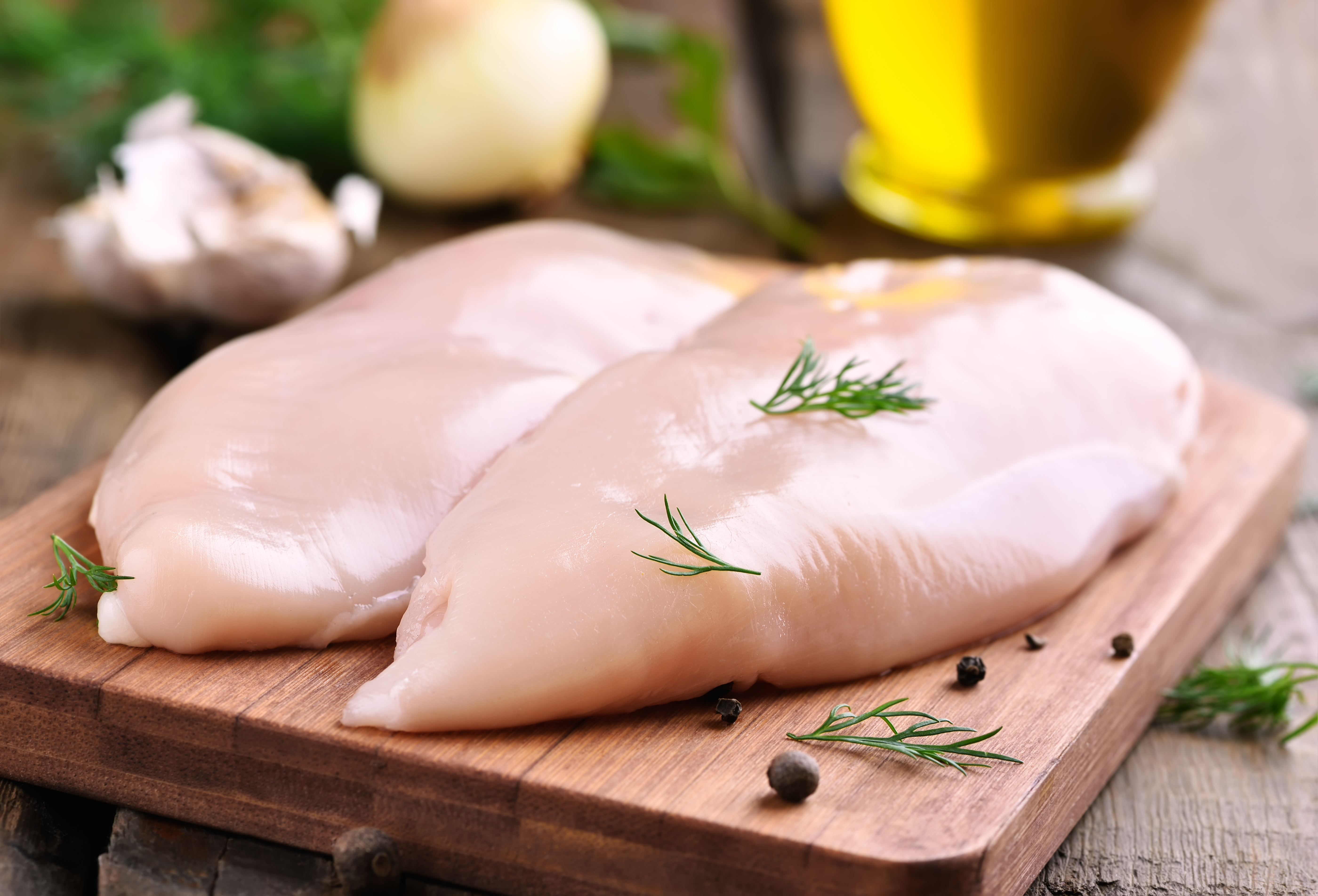
List Of Potentially Hazardous Foods

I Food Handling Basics Veggielution

List Of Potentially Hazardous Foods
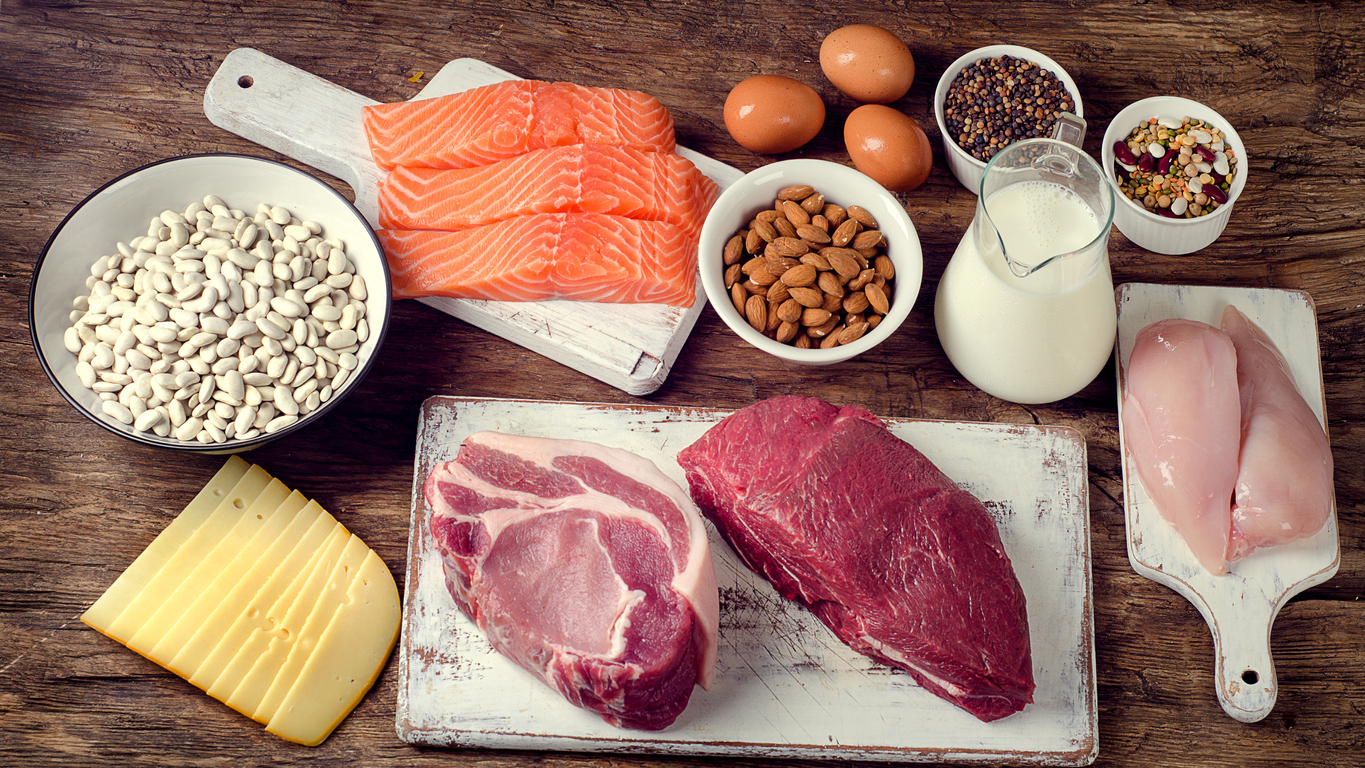
Potentially Hazardous Foods Health And Wellbeing Queensland Government

Lockout Tagout Poster Workplace Safety Slogans Occupational Health And Safety Lockout Tagout

Potentially Hazardous Foods Health And Wellbeing Queensland Government
Preventing Foodborne Illness Food Safety Sanitation And Personal Hygiene
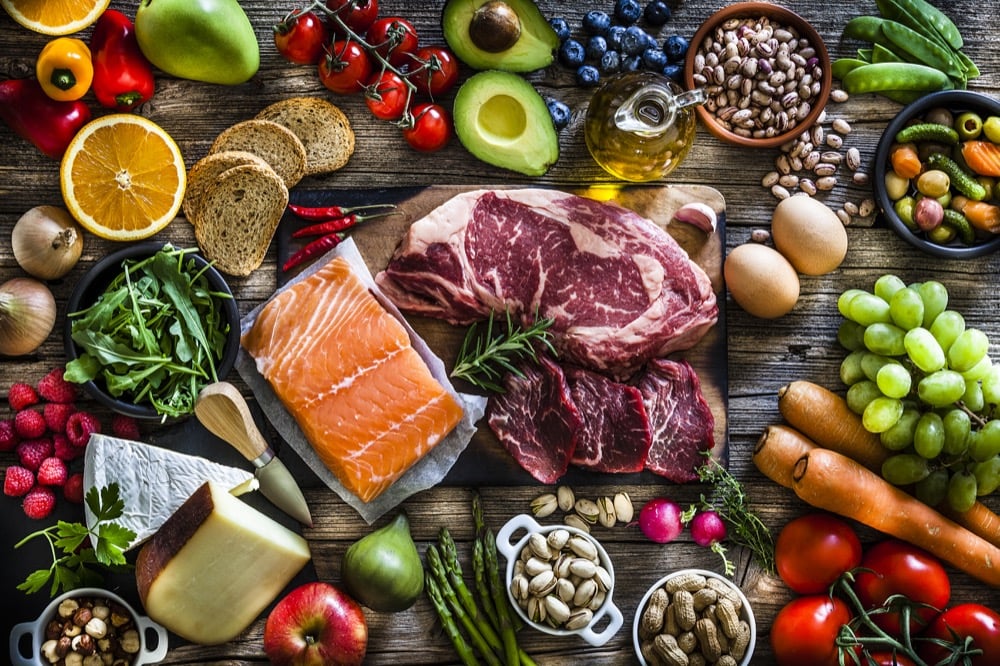
What Is Time Temperature Control For Safety Tcs
Food Safety Asotin County Health District

Restaurant Self Inspection Checklist How To Create A Restaurant Self Inspection Checklist Download This Re Inspection Checklist Checklist Template Checklist
